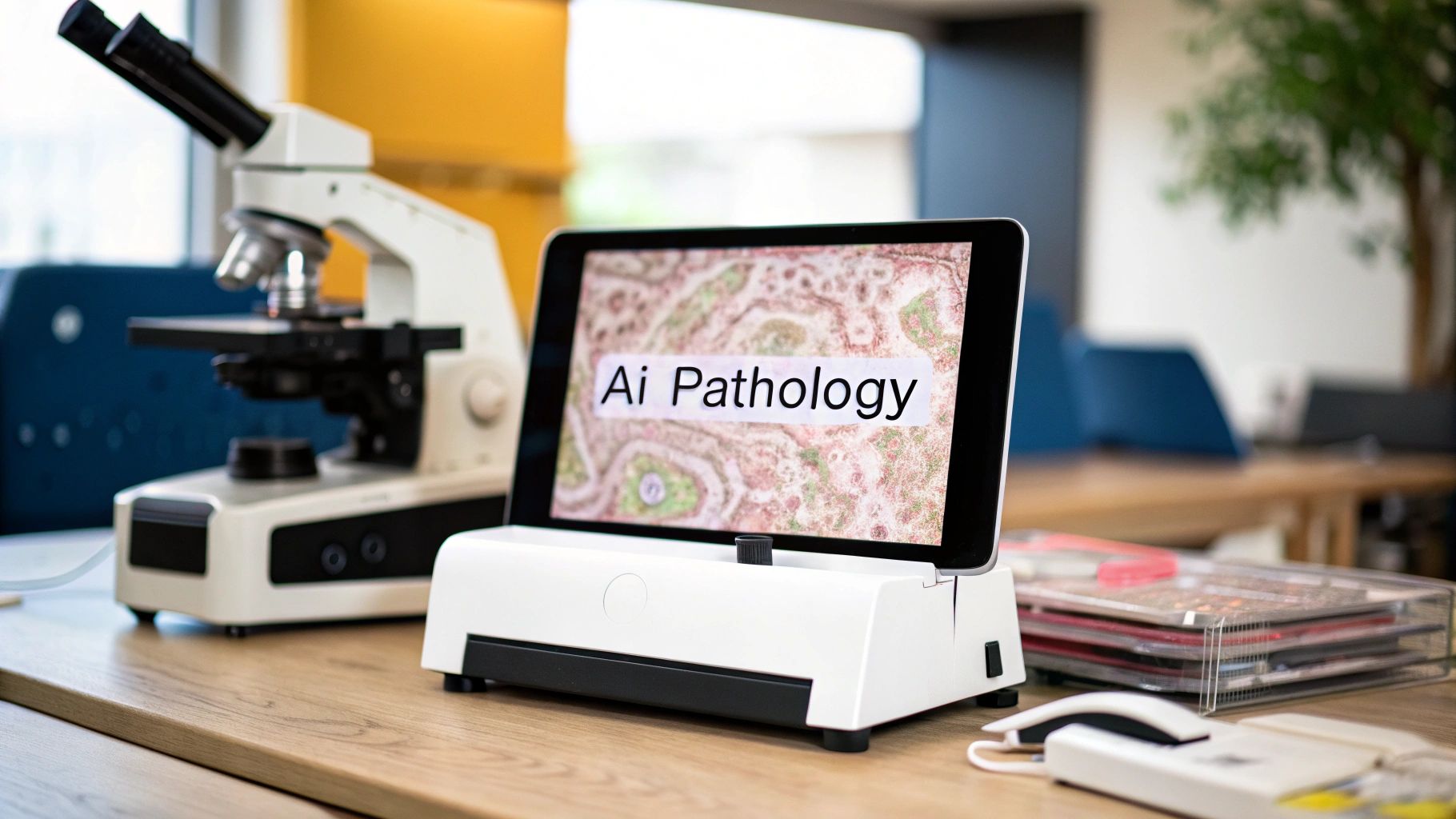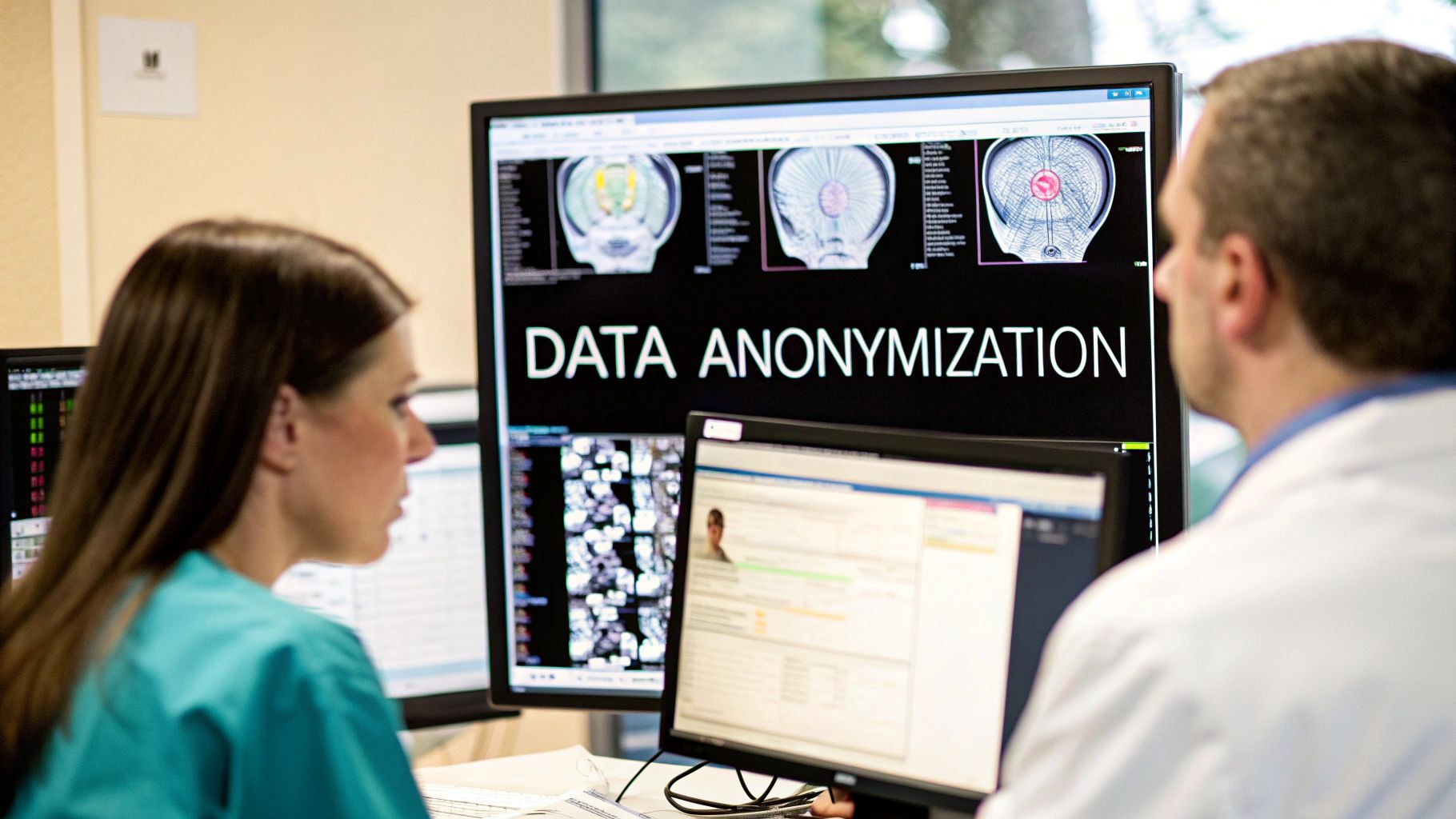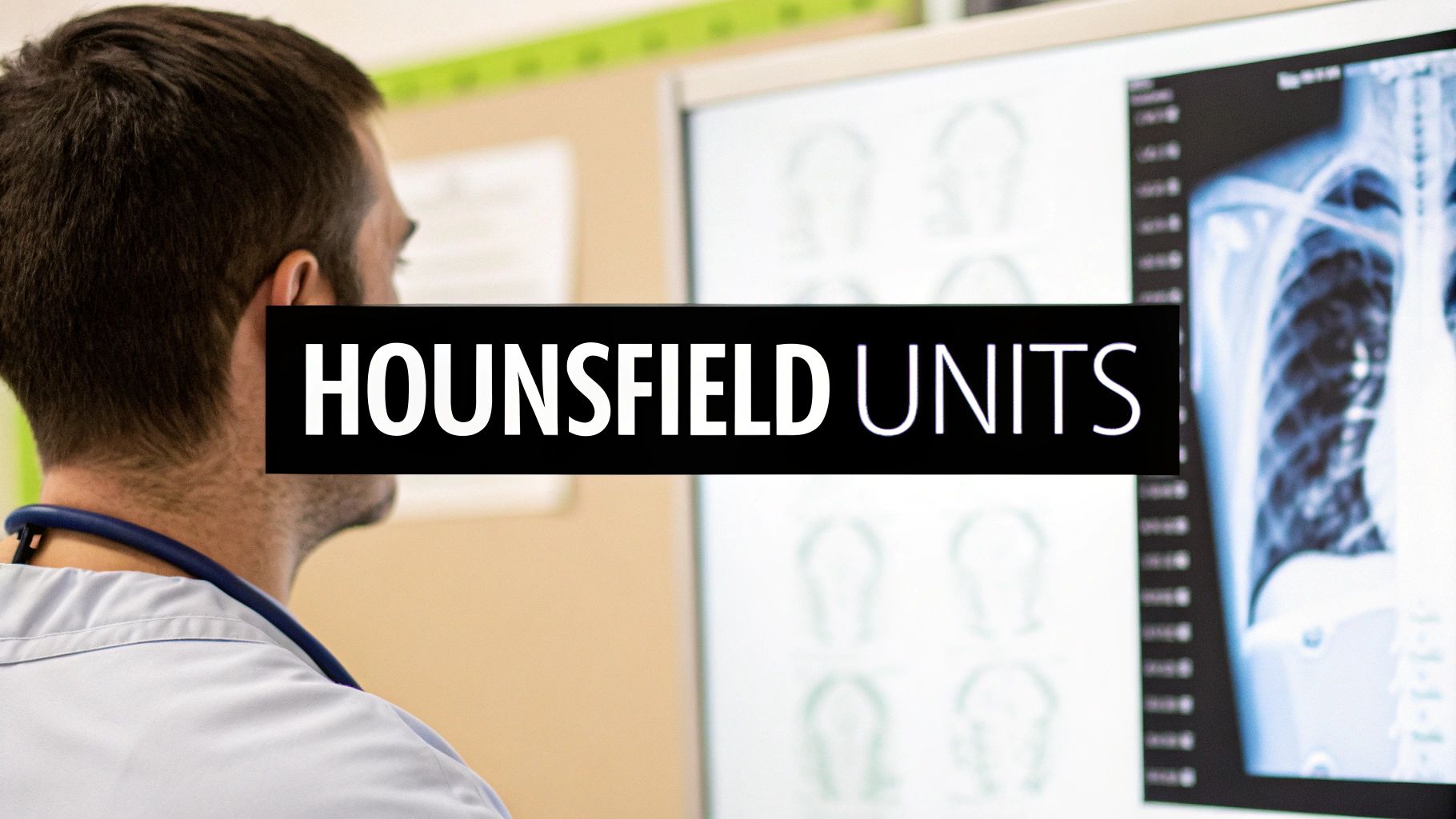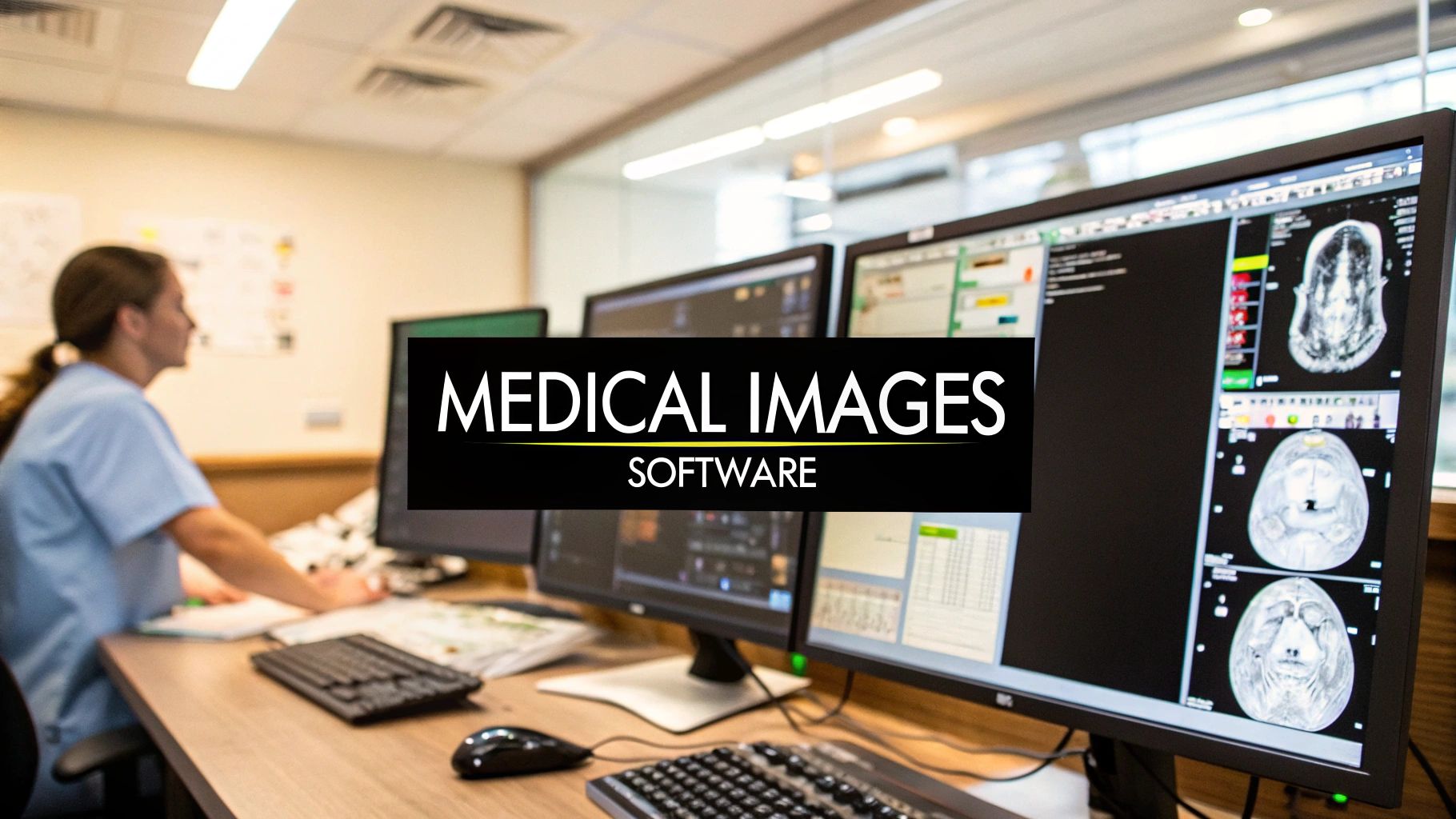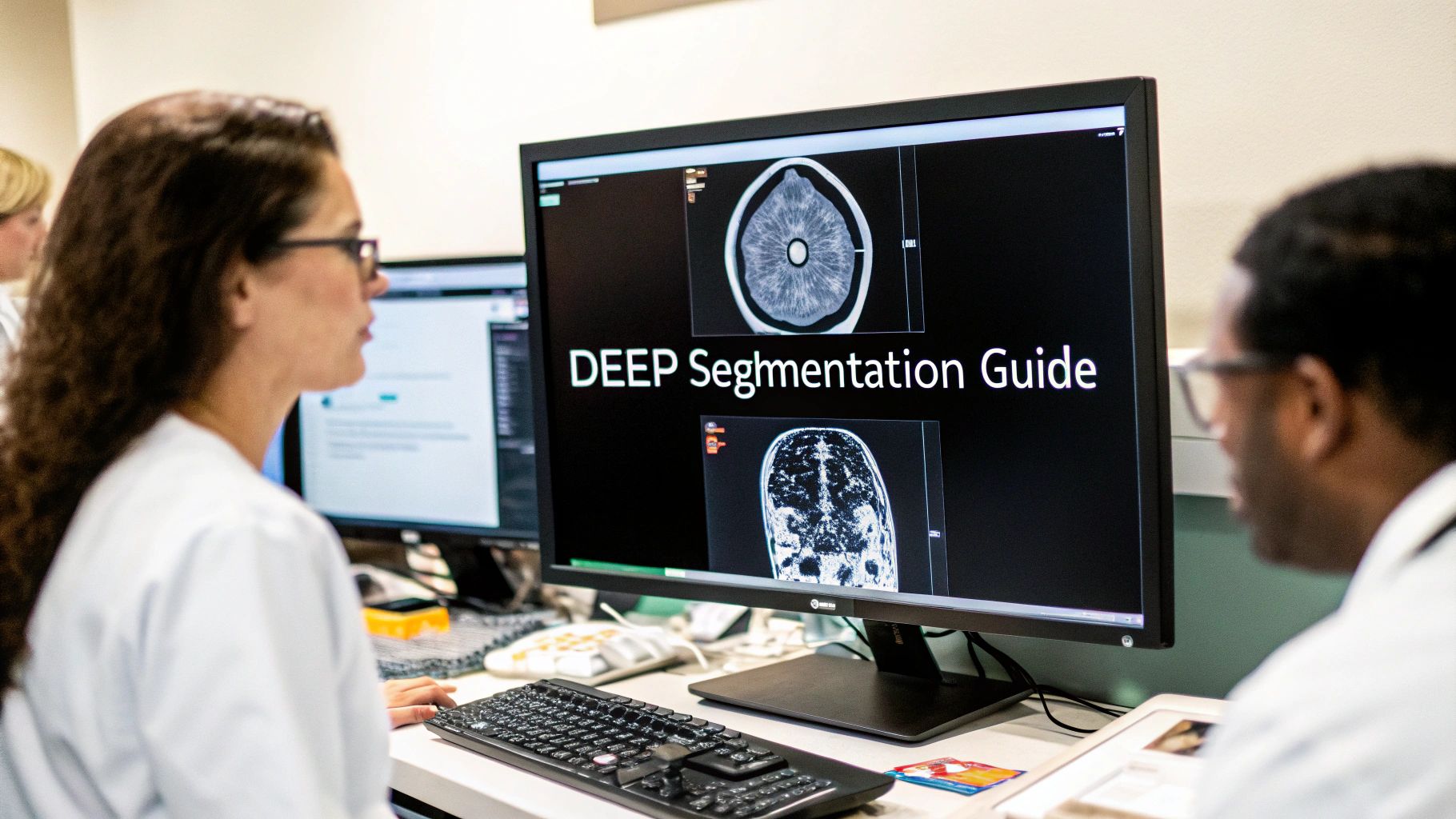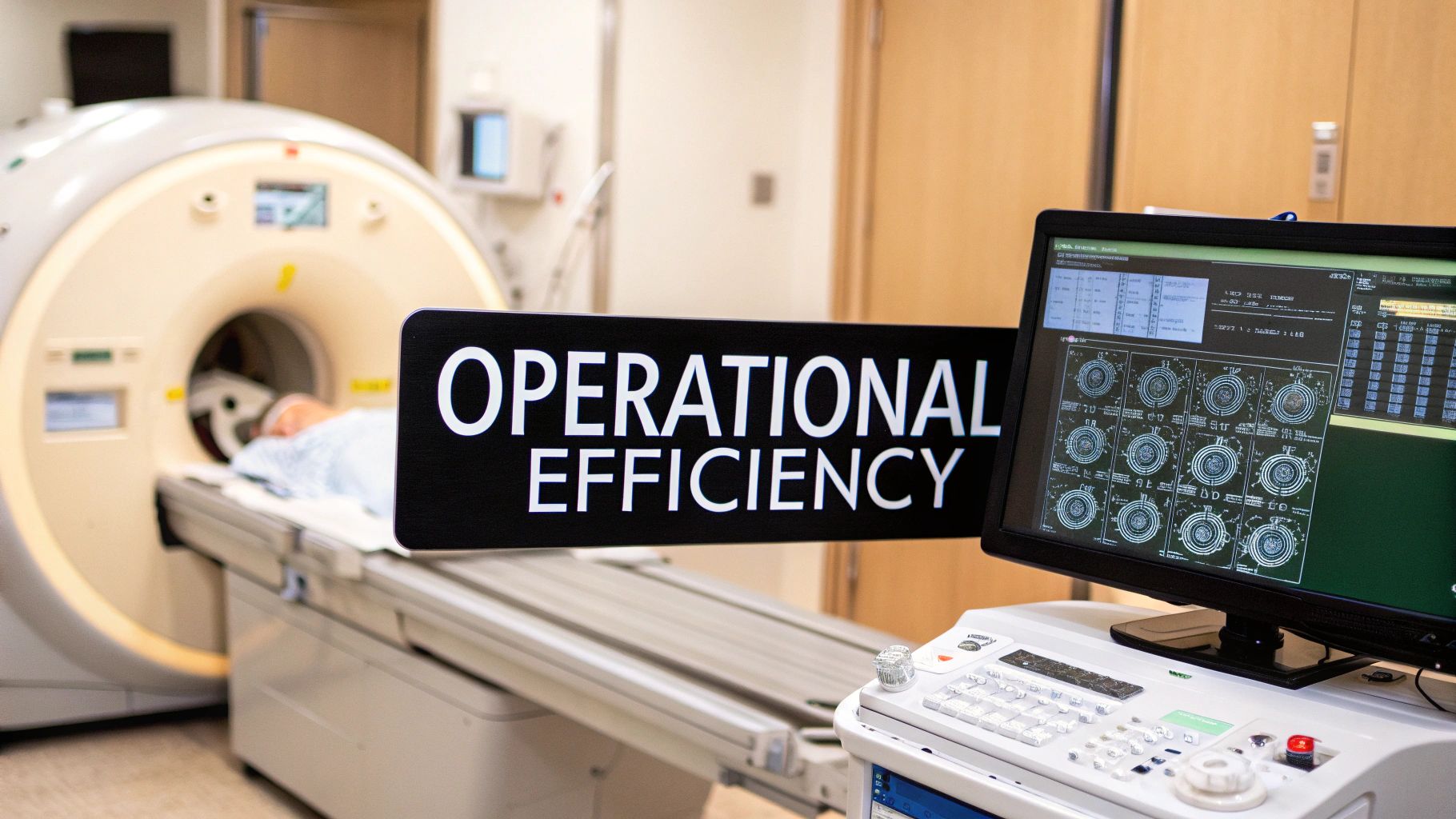The Evolution of Statistical Shape Modeling
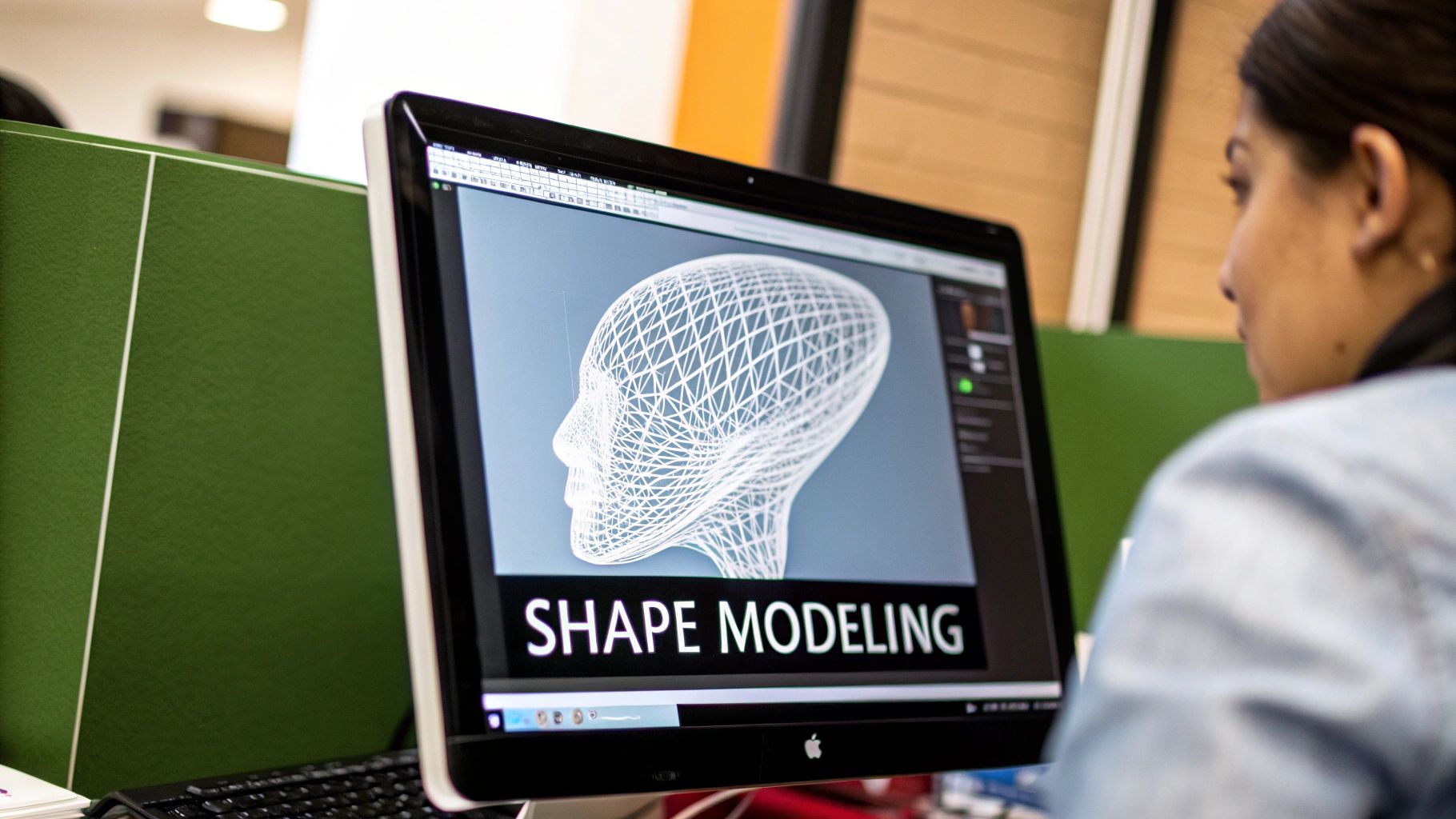
Statistical shape modeling (SSM) has become a cornerstone for analyzing shape variations across diverse fields. This technique goes beyond basic measurements to explore the intricacies of how objects, especially anatomical structures, differ. SSM has profoundly impacted medical diagnostics, treatments, and ongoing research.
One of the key advancements in SSM is the incorporation of Principal Component Analysis (PCA). PCA simplifies shape data by pinpointing the most significant variations. Imagine isolating the key flavors in a complex dish – PCA does something similar with shape data. This simplification makes analysis more manageable and reveals hidden patterns. It's been particularly useful in studying intricate anatomical structures, leading to a deeper understanding and improved diagnosis of various medical conditions.
The roots of SSM trace back to the late 20th century, with the concept formally introduced in the early 1990s. The Active Shape Model (ASM), developed by Cootes et al. in 1992, laid the foundation for modern SSM. Over time, integrating techniques like PCA has enhanced SSM's ability to analyze complex anatomical structures, such as variations in hip and cervical spine joints. This has significantly benefited orthopedics, enhancing surgical planning and patient outcomes. As of 2024, SSM remains crucial to medical progress globally, influencing fields like cardiology and neuroscience. For a more in-depth look, explore this research: Find more detailed statistics here.
From Landmarks to Deep Learning: A Journey of Innovation
Early SSM methods relied heavily on landmark-based representations. These landmarks, specific points on a shape, formed the basis for comparing and analyzing different shapes. While effective, this method had limitations in capturing subtle variations and demanded precise landmark placement. Nevertheless, it served as a stepping stone for more advanced techniques.
Researchers built upon landmark-based methods, developing more sophisticated approaches. These incorporated statistical tools like PCA to create adaptable and reliable shape models. This broadened the range of shape variations captured and provided more accurate representations of intricate structures.
The Emergence of Deep Learning in Shape Modeling
Integrating deep learning marks the latest phase in SSM's evolution. Deep learning models, capable of automatically learning intricate patterns from extensive datasets, are expanding the horizons of shape analysis. This is particularly valuable when analyzing highly variable structures or working with incomplete or noisy data, enabling SSMs to tackle even more complex medical challenges.
Deep learning offers the possibility of more precise and efficient shape analysis, especially when data is limited or imperfect. This advancement holds enormous potential for future breakthroughs in medical diagnostics, personalized medicine, and other fields dependent on accurate shape analysis. As the field continues to advance, we can expect even more innovative applications of deep learning within SSM.
Breaking Down the Core Mechanics of Shape Modeling
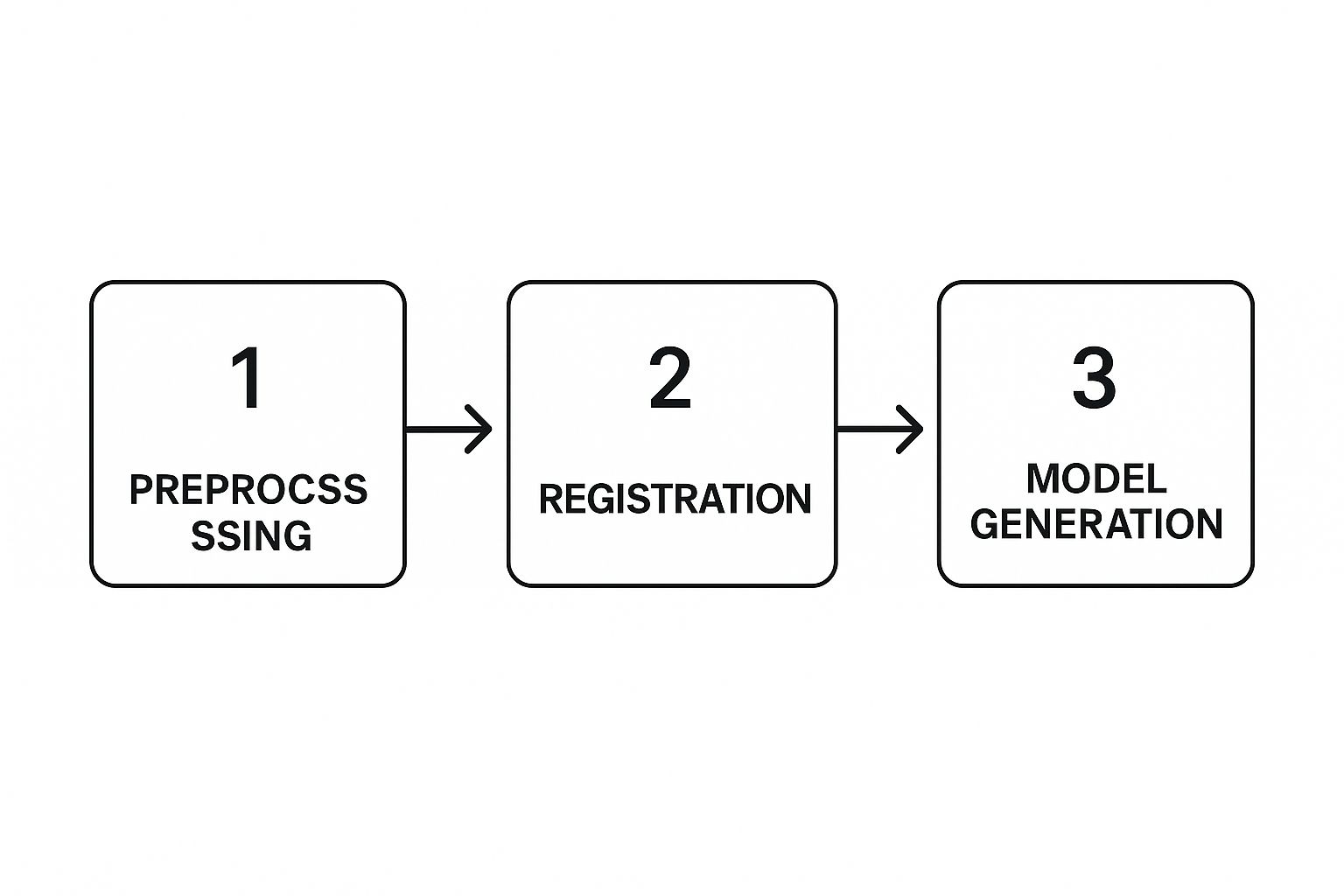
This section explores the core mechanics of statistical shape modeling (SSM), breaking down the process into digestible components. Understanding these mechanics is crucial for appreciating the power and versatility of SSM. The process flow below illustrates the key steps involved in building a statistical shape model. The flow highlights the dependencies between each stage, emphasizing the importance of proper sequencing.
Landmark-Based Representation: The Foundation of Shape Analysis
Statistical shape modeling often begins with landmark-based representation. These landmarks are carefully selected points on a shape that capture its key features. They act like anchors, defining the shape's overall structure. The placement and relationships between these landmarks provide the foundation for comparing and analyzing variations across different shapes.
Establishing Correspondence: Aligning Shapes for Meaningful Comparison
Once landmarks are identified, correspondence must be established between them across multiple shapes. This ensures accurate comparisons by aligning equivalent points. For instance, the tip of the nose on one face should be compared to the tip of the nose on another, not to the corner of an eye. This precise alignment is essential for robust analysis.
Dimensionality Reduction With PCA: Simplifying Complex Shape Data
Shapes, particularly intricate anatomical structures, can have numerous landmarks, resulting in high-dimensional data that's difficult to manage. Principal Component Analysis (PCA) simplifies this complexity by reducing the number of variables while retaining the most significant shape variations. Think of it as summarizing a complex data set into its core components. This reduction makes statistical analysis more tractable and reveals underlying patterns.
The Statistical Shape Modeling Workflow
To better understand the flow, let's look at a breakdown of the process.
-
Landmark Acquisition: This initial step involves identifying and marking important landmarks on each shape within the dataset.
-
Procrustes Alignment: Shapes are then aligned based on their landmarks, removing variations in position, scale, and rotation. This standardized alignment is critical for subsequent analysis.
-
Principal Component Analysis (PCA): PCA identifies the principal modes of variation, capturing the most significant shape differences. This helps reduce the dimensionality of the data.
-
Model Building: A statistical model is constructed using the principal components. This model represents the average shape and its potential variations.
-
Shape Analysis and Application: The resulting model can then be used to analyze new shapes, identify abnormalities, or predict future shape changes.
The order of these steps is critical, as each stage depends on the previous one. For example, Procrustes alignment must precede PCA because PCA requires aligned shapes to identify meaningful variations. This standardized workflow ensures consistency and reproducibility in shape analysis, providing a clear path from raw data to a valuable analytical tool.
To summarize the workflow, the following table outlines the key components:
Key Components of Statistical Shape Modeling Workflow
| Process Step | Technical Requirements | Expected Outcomes | Typical Challenges |
|---|---|---|---|
| Landmark Acquisition | Image processing software, anatomical expertise | Set of consistently placed landmarks on each shape | Landmark variability, image quality |
| Procrustes Alignment | Software for Procrustes analysis | Shapes aligned in position, scale, and rotation | Sensitivity to landmark placement |
| PCA | Statistical software (e.g., MATLAB, R) | Reduced dimensionality, major modes of variation identified | Interpretation of principal components, data overfitting |
| Model Building | Statistical software | Statistical shape model representing average shape and variations | Model complexity, generalizability |
| Shape Analysis | Statistical software, domain-specific knowledge | Quantitative shape analysis, anomaly detection | Defining appropriate metrics, interpreting results |
This table provides a concise overview of the workflow, highlighting the technical requirements and expected outcomes of each step. It also addresses common challenges that may arise during the process, offering a valuable resource for anyone working with statistical shape modeling.
Transforming Healthcare Through Shape Analysis
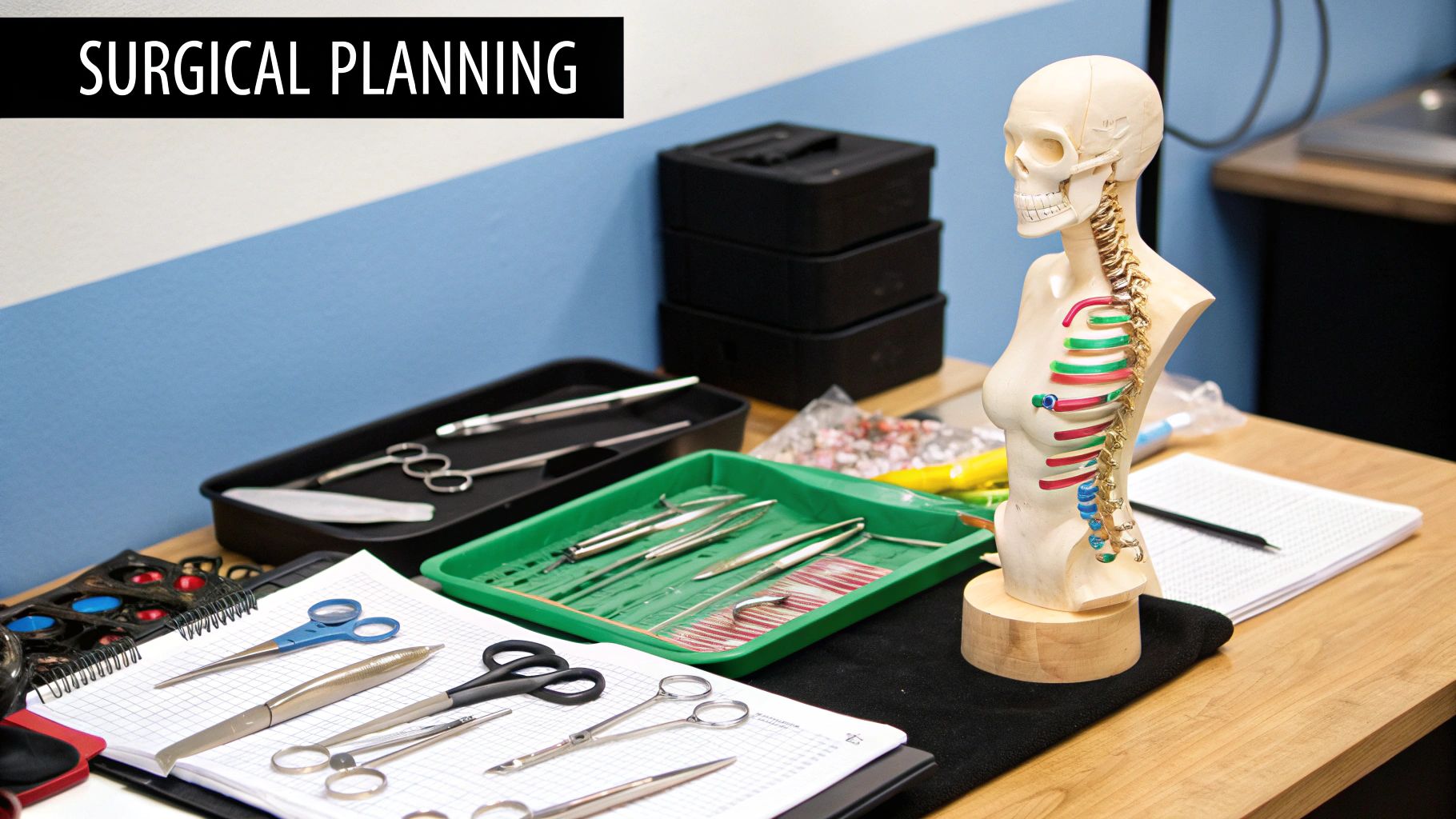
Statistical shape modeling is rapidly changing how medical professionals approach patient care. This powerful tool allows for a deeper understanding of the human body's intricate structures, moving beyond traditional measurements. Healthcare providers gain a more complete picture of individual patient needs, leading to more personalized and effective treatment plans.
Statistical Shape Modeling in Cardiology
Statistical shape modeling plays a vital role in cardiology, analyzing the heart's structure and function. By identifying subtle changes in cardiac morphology, it can help predict the progression of heart disease. These subtle changes might be missed by conventional methods. This early detection capability allows for timely intervention and treatment adjustments, ultimately improving patient outcomes.
Statistical shape modeling also increases diagnostic accuracy. Detailed models of individual hearts help doctors understand how a patient's heart differs from the norm. This leads to a more precise diagnosis and a more targeted treatment plan. This personalized approach is a key advantage of using statistical shape modeling in this field.
Revolutionizing Orthopedics With Customized Solutions
Orthopedics has also benefited significantly from statistical shape modeling. One of its most promising applications is in designing custom joint replacements. These implants, created using precise shape analysis, can substantially reduce recovery times, often by weeks. This results in faster healing and increased patient satisfaction.
Surgeons also use this technology for more effective procedure planning. Creating a virtual model of the patient's joint allows for accurate prediction of the ideal implant size and placement. This minimizes the risk of complications and streamlines the recovery process, improving overall surgical outcomes.
Advancing Neuroscience Through Brain Structure Analysis
In neuroscience, statistical shape modeling offers a deeper understanding of brain structures and their variations. This is especially valuable in diagnosing and treating neurological conditions. Shape analysis can identify subtle structural differences that might indicate specific diseases.
Moreover, statistical shape modeling enhances treatment targeting. By providing detailed maps of brain structures, it guides surgical procedures and improves the delivery of targeted therapies. This precision minimizes damage to healthy tissues and maximizes treatment effectiveness. Learn more about this topic.
Enhancing Communication and Collaboration in Healthcare
Beyond diagnostics and treatment, statistical shape modeling improves communication between researchers and clinicians. By creating intuitive visualizations of complex anatomical relationships, these tools help bridge communication gaps and facilitate informed decision-making. This collaborative approach leads to enhanced patient care and fosters medical innovation.
Progressive medical centers are combining statistical shape modeling with other imaging methods. This creates comprehensive patient profiles that improve diagnostic accuracy and enable more personalized treatments. Integrating multiple data sources allows for a more holistic view of a patient's condition, ultimately leading to better health outcomes.
Scaling Shape Modeling Across Global Healthcare Systems
Statistical shape modeling (SSM) is proving incredibly adaptable in various healthcare settings worldwide. This adaptability is essential for addressing global healthcare disparities and expanding access to advanced diagnostics. SSM's capacity to capture anatomical variations across diverse ethnic groups leads to more accurate interventions and improved treatment outcomes globally. Furthermore, advancements in computing power have made these once-exclusive tools accessible in resource-constrained areas.
Democratizing Access to Advanced Shape Analysis
A significant development is the growing accessibility of advanced analytical tools, even in environments with limited resources. This democratization empowers medical professionals in underserved regions with detailed shape analysis capabilities, improving diagnoses and treatment plans. Expanding access to these tools is paramount for equitable healthcare delivery worldwide.
Initiatives focused on developing comprehensive shape libraries are particularly valuable. These libraries, encompassing data from diverse populations, create a stronger foundation for statistical modeling. Researchers can then develop more robust and generalizable models. Data sharing and collaborative methodology development are essential aspects of this global effort.
Furthermore, the standardization of SSM methodologies is becoming increasingly important. Consistent approaches to data collection, analysis, and interpretation allow for greater collaboration and comparability of research across different studies and geographical regions. This standardization ensures the reliability and validity of findings, leading to more confident clinical applications of SSM. The global relevance and scalability of SSM are underscored by its increasing use in both clinical practice and research. Advancements in computational algorithms allow for the creation of dense sets of landmarks on various organs, increasing the accuracy and efficiency of shape analysis. This ability to adapt and model different organs and tissues establishes SSM as a cornerstone of medical imaging and diagnostics worldwide. Explore this topic further: Discover more insights about statistical shape modeling.
Bridging Healthcare Gaps With Cost-Effective Solutions
SSM offers more than advanced technology; it provides cost-effective solutions for complex medical imaging challenges. This is particularly relevant in regions with limited healthcare budgets. By providing efficient and accurate diagnostic tools, SSM can help optimize resource allocation and ultimately improve patient care.
Global Collaboration and Knowledge Sharing
Collaborative initiatives are critical for scaling SSM across global healthcare systems. These projects emphasize building extensive shape libraries and standardizing methodologies, effectively creating a worldwide knowledge ecosystem. Shared resources accelerate innovation and facilitate the development of new SSM applications, benefiting healthcare systems globally.
Case Studies: SSM in Action Across Continents
Real-world examples from various regions demonstrate the practical impact of SSM. From improving surgical planning in Africa to enhancing disease diagnosis in South America, SSM is addressing diverse healthcare challenges. These successes highlight the versatility and adaptability of this technique as a valuable tool for advancing global healthcare.
The Power of Principal Component Analysis
Principal component analysis (PCA) plays a vital role in making SSM more accessible and powerful. By simplifying complex anatomical data, PCA allows researchers to identify and quantify key variations, leading to more precise medical interventions. This simplification is particularly beneficial in resource-limited settings, as it reduces the computational demands of shape analysis. This makes implementing SSM feasible in a broader range of healthcare facilities. The efficient and accurate analysis of large datasets afforded by PCA is essential for developing personalized medicine approaches, including the design of custom prosthetics and implants.
Beyond Medicine: Shape Modeling Across Industries
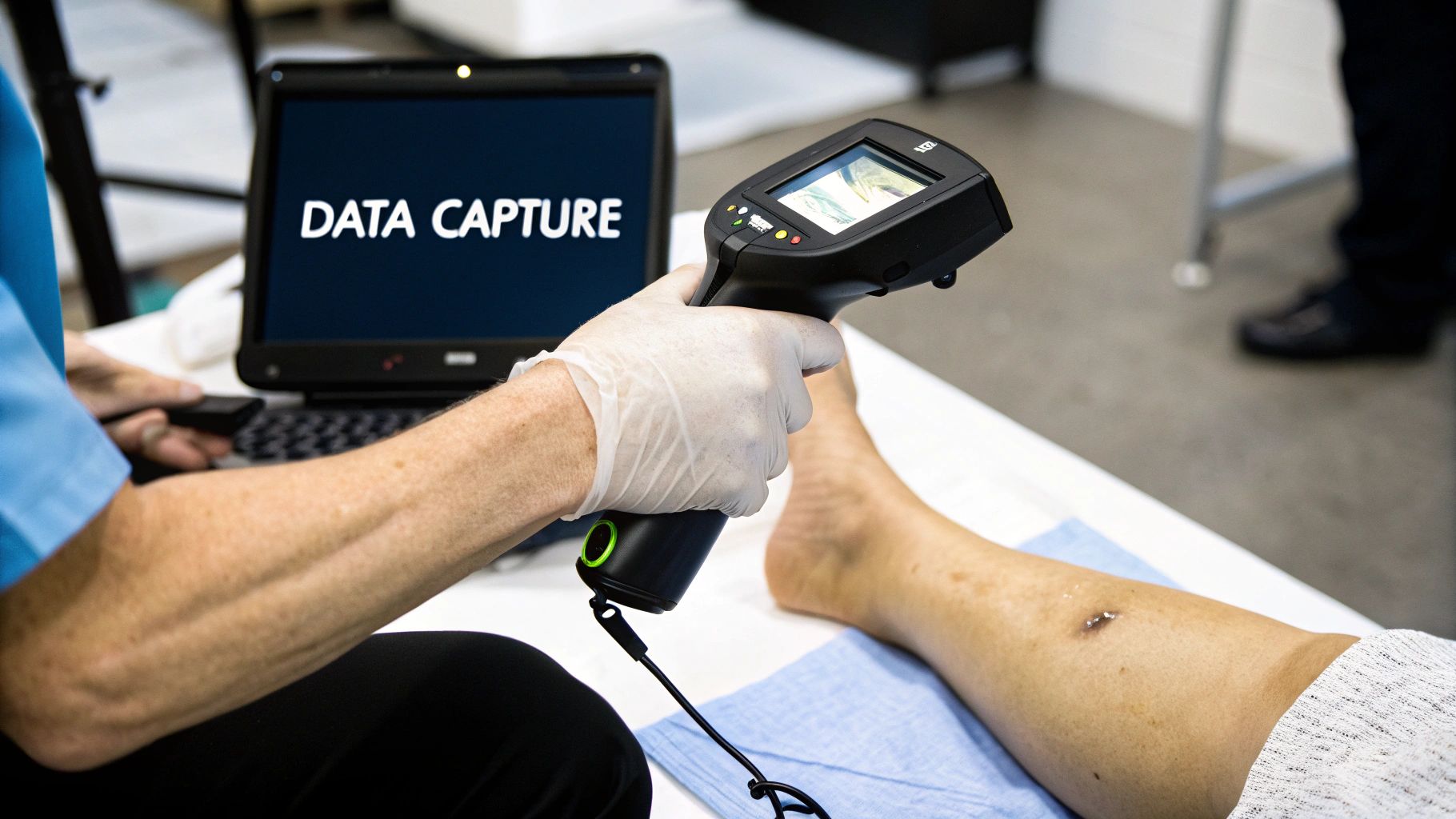
Statistical shape modeling, proven effective in healthcare, is now contributing to various other industries. The same methods used to analyze anatomical structures are solving complex problems in fields ranging from aerospace engineering to environmental science. This sharing of knowledge is fueling innovation and showcasing the versatility of these techniques.
Streamlining Aerospace Design
Aerospace engineers use statistical shape modeling to optimize aerodynamic component designs. By creating statistical models of wing shapes, for instance, engineers can explore numerous design variations and quickly pinpoint the most efficient options. This significantly reduces development time, potentially saving months of engineering work and lowering costs.
Statistical shape modeling can analyze how wing shape changes affect lift and drag. This helps engineers identify the optimal shape for maximum lift and minimum drag, which is essential for fuel efficiency. This focused approach reduces the need for extensive wind tunnel testing, saving additional time and resources.
Reconstructing The Past
Archaeologists are also employing statistical shape modeling to reconstruct fragmented artifacts with impressive accuracy. By analyzing the shapes of existing pieces, researchers create statistical models that predict the missing parts, digitally rebuilding ancient objects. This offers valuable historical insights and allows for unprecedented study of these artifacts.
This method has been particularly helpful in reconstructing broken pottery, offering a more complete understanding of past cultures. It also helps researchers visualize ancient structures based on fragmented remains. This enhanced understanding of history provides valuable context for past events and allows for the construction of more complete historical narratives.
Monitoring Environmental Changes
Environmental scientists use statistical shape modeling to monitor changes in coral reefs and geological formations. Tracking subtle shape shifts over time helps them detect changes related to climate change, pollution, or other environmental factors. This data is crucial for developing conservation strategies and protecting these delicate ecosystems.
Changes in the shape of coral reefs can indicate the presence of harmful environmental stressors. This allows scientists to proactively address these stressors before irreversible damage occurs. Monitoring geological formations also helps with predicting and mitigating natural disasters, potentially saving lives and protecting infrastructure.
To better understand the diverse applications of statistical shape modeling, let's examine the following table:
To better understand the diverse applications of statistical shape modeling, the following table provides a comparison across various industries. It highlights the unique ways this technology is being adapted and the specific benefits and challenges encountered in each sector.
| Industry | Primary Applications | Specialized Techniques | Key Benefits | Notable Challenges |
|---|---|---|---|---|
| Aerospace Engineering | Aerodynamic component design, wing shape optimization | Computational fluid dynamics coupled with shape analysis | Reduced development time, improved fuel efficiency | Complex modeling of fluid-structure interactions |
| Archaeology | Artifact reconstruction, digital preservation | 3D scanning and surface reconstruction algorithms | Enhanced understanding of ancient cultures, restoration of damaged artifacts | Dealing with incomplete and fragmented data |
| Environmental Science | Monitoring coral reefs and geological formations, analyzing ecosystem changes | Time-series shape analysis, geospatial modeling | Early detection of environmental threats, improved conservation strategies | Distinguishing natural variability from human-induced changes |
This table highlights how various fields are leveraging statistical shape modeling. From optimizing designs in aerospace engineering to reconstructing the past in archaeology and monitoring the environment, each application offers unique benefits. However, challenges remain, such as complex modeling and dealing with incomplete data.
Cross-Disciplinary Knowledge Transfer
The adoption of statistical shape modeling across various fields demonstrates the value of cross-disciplinary knowledge transfer. Techniques honed in one area can quickly improve applications in another, accelerating innovation. This interconnection reflects the fundamental principles underlying this technique and its broad applicability to shape-based data.
As we continue to explore the potential of statistical shape modeling, its impact will likely extend to even more industries. The ability to analyze and understand shape variations holds significant promise for solving complex problems and driving innovation across a broad range of fields.
The Future of Shape Modeling: Innovations on the Horizon
Statistical shape modeling is a constantly evolving field. Looking ahead, several exciting developments promise to reshape how we analyze and understand shape variations. These advancements will build upon existing techniques, opening new applications and providing deeper insights.
Deep Learning Integration: Creating Hybrid Models
One of the most promising advancements is the integration of deep learning. Combining deep learning with traditional statistical methods creates hybrid models capable of handling increasingly complex structures. These models excel at identifying subtle patterns and anomalies in large datasets, pushing the boundaries of shape analysis.
Imagine analyzing intricate vascular networks or complex bone structures. Hybrid models offer the precision and power needed for these challenging tasks. This is especially relevant in personalized medicine, where capturing individual variations is crucial.
Capturing Dynamic Changes With Temporal Shape Modeling
The field is also moving towards capturing dynamic changes through temporal shape modeling. This involves analyzing how shapes change over time, crucial for understanding growth, development, and disease progression. Imagine observing how a plant grows or a tumor develops. Temporal shape modeling can quantify these dynamic changes.
This offers valuable insights into biological processes and can help predict future changes, aiding in early diagnosis and treatment planning.
Digital Twins: Revolutionizing Personalized Medicine
Digital twins, powered by advanced shape models, are also emerging as a game-changer. These virtual replicas of physical objects, from organs to machines, allow for simulations and predictions. In healthcare, digital twins can personalize treatment by allowing physicians to simulate procedures on a patient's virtual organ before operating on the actual organ.
This dramatically reduces risks and improves the effectiveness of medical interventions. This technology is also transforming predictive maintenance in other industries, optimizing performance and preventing costly failures.
Real-Time Shape Analysis: From Surgery to Autonomous Systems
Computational breakthroughs are making real-time shape analysis a reality. This is particularly transformative for applications requiring immediate feedback, such as surgical navigation. Imagine a surgeon using real-time shape analysis during a complex procedure. The technology can guide their instruments with pinpoint accuracy, improving safety and efficiency.
Real-time analysis is also essential for autonomous systems, such as self-driving cars, enabling them to interpret their environment and make split-second decisions.
Open-Source Initiatives: Democratizing Access to Modeling Tools
Finally, open-source initiatives are playing a crucial role in democratizing access to sophisticated modeling tools. By making these tools freely available, researchers and developers can collaborate more easily, accelerating innovation. Open-source platforms also foster knowledge sharing and community building, propelling the field forward.
This collective effort ensures that the benefits of shape modeling reach a wider audience, impacting numerous fields.
The future of statistical shape modeling is bright. As these innovations mature and converge, we can anticipate significant breakthroughs in diverse fields, from personalized medicine and environmental science to manufacturing and beyond. These advancements hold the potential to transform how we interact with the world, offering deeper insights and powerful new tools for problem-solving.
Ready to elevate your medical imaging capabilities with the power of AI? Discover PYCAD's cutting-edge solutions for data handling, model training, and deployment, designed to optimize your medical devices and enhance healthcare outcomes. Explore PYCAD's AI-powered solutions for medical imaging today.

